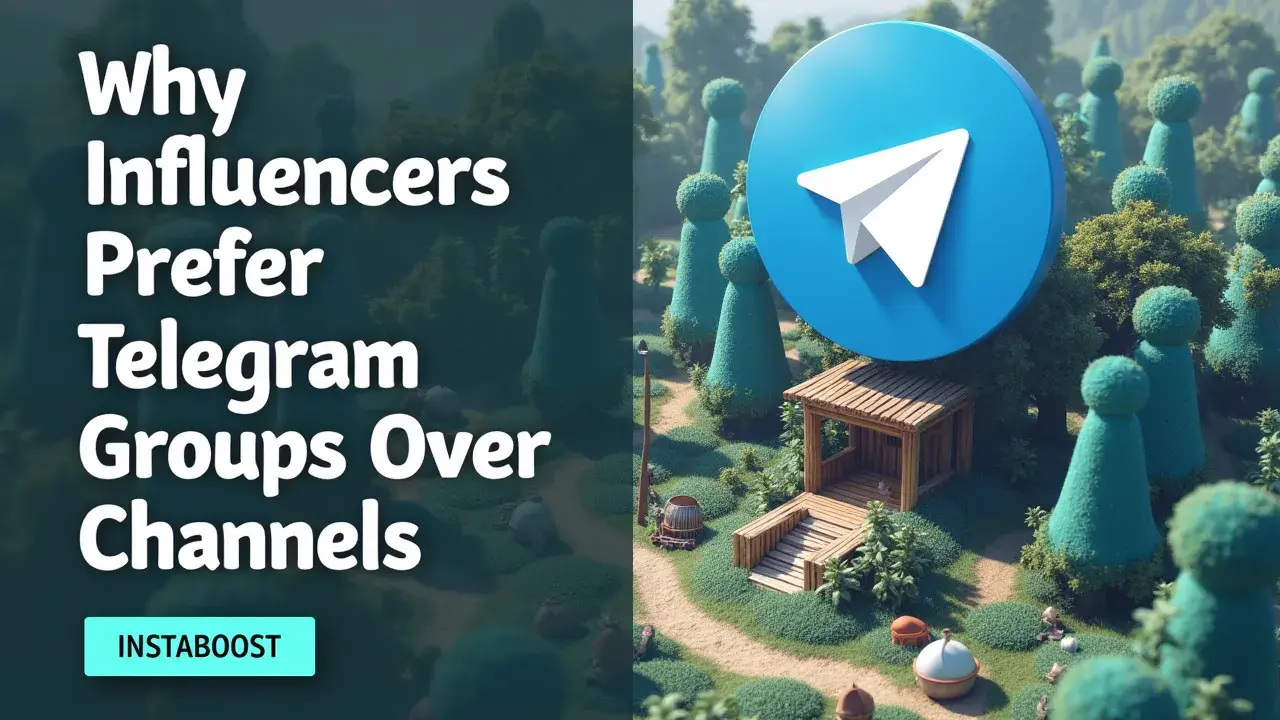Why Do Influencers Prefer Telegram Groups Over Channels?
Influencers increasingly favor Telegram groups because two-way conversation deepens engagement and builds community. Groups enable interactive replies, threaded discussions, and member-to-member support, which can boost participation compared to one-way channel broadcasts. Moderation needs and noise risks rise as membership grows, but clear rules and active admins keep quality high. Choosing groups when community feedback and dialogue matter most helps align content with audience needs and momentum.
The Shift from Broadcasting to Building Real Connections
Scroll through any influencer’s digital footprint these days, and you’ll notice a subtle but significant migration: their favorite hangouts are moving from the one-way street of Telegram channels to the lively crossroads of Telegram groups. It’s not just another tweak in social media strategy – there’s a real sense that something deeper is happening here. Influencers, who once reveled in broadcasting their best life to silent audiences, increasingly crave the spark that only genuine conversation brings.
A Telegram channel might let you shout from the rooftops, but a group invites you to pull up a chair and actually listen. This shift isn’t lost on anyone serious about engagement or community. You have to wonder: what’s so compelling about the group format that it’s winning over even the biggest online personalities? Maybe it’s the lure of direct feedback, the rush of seeing fans interact in real-time, or the way group chats blur the line between creator and follower.
Whatever the reason, this preference is reshaping the influencer playbook – making those old-school, one-to-many broadcasts feel almost quaint by comparison. We’re about to unpack why Telegram groups, not just channels, are fast becoming the real engine rooms for influencer interaction and impact. Curious what drives this change – and how it could affect the future of online communities? Let’s dig in.
A Telegram channel might let you shout from the rooftops, but a group invites you to pull up a chair and actually listen. This shift isn’t lost on anyone serious about engagement or community. You have to wonder: what’s so compelling about the group format that it’s winning over even the biggest online personalities? Maybe it’s the lure of direct feedback, the rush of seeing fans interact in real-time, or the way group chats blur the line between creator and follower.
Whatever the reason, this preference is reshaping the influencer playbook – making those old-school, one-to-many broadcasts feel almost quaint by comparison. We’re about to unpack why Telegram groups, not just channels, are fast becoming the real engine rooms for influencer interaction and impact. Curious what drives this change – and how it could affect the future of online communities? Let’s dig in.

Maybe It’s Not About the Loudest Voice in the Room
For a long time I thought keeping track of every metric was the right way to go. I would check reach, followers, views – anything that could be measured – thinking it all added up to progress. Especially in spaces like Telegram, the focus is always on big numbers. When you send out a post and see that it hits thousands of people, it feels like you’re accomplishing something. I’ve even seen people talk about where to buy telegram followers cheap, as if that’s just part of how things work.
But when I pay attention to what actually matters to me, it’s not the reach, but the replies. It’s a different feeling when someone takes a moment to respond, even if I don’t know them. That’s when it stops being a broadcast and starts to feel like an actual conversation. Most advice still says to aim for the largest audience possible, but that misses the way people use Telegram in real life.
People want to be where they can talk, ask questions, or even just send a quick reaction. Channels look impressive, but most of the meaningful moments I’ve had happened in smaller groups, when someone shared a story or asked something real, and other people chimed in. It makes me wonder if we’re measuring impact in a way that misses what people actually come for. I keep thinking about how these smaller exchanges stick with me, even if no one else sees them.
Redefining Scale: Depth Over Distance
Scaling, at least in this context, isn’t really about growing as fast as possible – it’s more about paying attention to how and why you grow. For a while, the default was to focus on getting bigger: more followers, more views, wider reach. But once you slow down to think about it, you start to realize that kind of growth doesn’t always mean your work is actually connecting with anyone, especially on something like Telegram.
A channel can feel like you’re speaking into a void, sending out messages to people you never hear from. Groups, though, are different. They pull people in and make space for conversations. When influencers start moving to groups instead of channels, it’s not just about following a trend; it’s a shift in what they value. Influence stops being about the biggest possible audience and turns into something quieter – holding someone’s attention, being trustworthy, building a place where people can talk and shape what’s happening. These days, even services that boost your presence – like telegram reach service – seem to underscore the difference between being seen and actually being heard.
Instead of chasing the next viral jump in numbers, the focus moves to what it feels like when people actually show up and stick around, give feedback, ask questions, and help shape where things go. You probably won’t see dramatic spikes in your stats, but you might notice more regular faces, more honest conversations, people who follow because they actually care. The numbers don’t go away, but they start to mean something different.
Scaling, then, isn’t about shouting louder or getting as many as possible in the room – it’s about making a space where people feel comfortable speaking up and being part of what you’re building together. And when you look at it like that, choosing groups over channels feels less like a new strategy and more like returning to something that maybe worked better all along.
The Case Against Channels: Where’s the Real Connection?
Sometimes I feel like I get more out of a fortune cookie than I do from scrolling through a Telegram channel. It can feel oddly empty – seeing influencers send out messages to thousands of people, watching the view count go up, but not much else happening. On paper, those numbers would probably look great to someone who focuses on stats or algorithms.
But I wonder if anyone is actually paying attention, or if we’re all mostly pretending to be involved. When influencers stick to channels, it’s a lot of talking at people, not with them. That feels pretty flat after a while. You can really notice the difference when group chats start to pop up. All of a sudden, other voices come in, and things feel a bit more alive. People start sharing their own thoughts, asking questions, making jokes.
The energy is different. It’s not just about one person pushing updates; it’s more like a real conversation, and things can actually build from there. Compared to that, regular channels seem kind of closed off, like watching someone’s slideshow with no way to say anything back. I think that’s probably why more creators are starting to prefer groups when they want to actually talk to people and build some kind of trust. Scrolling past all those channel posts with their buy telegram reactions and big numbers, it’s the group chats that actually make you feel seen. It’s the kind of connection that sticks around longer than a post that gets a lot of views for a day or two. If you’re trying to grow something meaningful, it makes me wonder when was the last time a channel post led to an actual discussion. Reach looks good in a report, but it doesn’t always mean you’re really reaching anyone.















